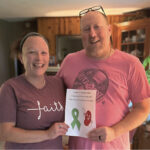 As the cold winter months drag on and kids share germs with their classmates, parents start to worry if their child may have more than the common cold. Often, children have illnesses this time of year that are severe and may linger for extended periods. Parents can become concerned that their child may have a sinus infection.
As the cold winter months drag on and kids share germs with their classmates, parents start to worry if their child may have more than the common cold. Often, children have illnesses this time of year that are severe and may linger for extended periods. Parents can become concerned that their child may have a sinus infection.
When a cold or virus makes a child sick, the sinus tissue becomes swollen and produces more mucus. Sinuses, the head’s empty spaces lined by the same tissue as the nose and mouth, fill up with mucus. The mucus filling up these empty spaces prevents bacteria that is normally found in the sinuses from escaping.
Most of the time, the virus resolves on its own. Then drainage resumes like normal. But occasionally bacteria trapped by mucus will multiply, and this will cause a sinus infection.
Children fully form sinuses at 6 or 7 years old. Not all sinuses are present at birth. This means that children under this age are less likely to have a sinus infection than an older child or adult.
Diagnosing sinus infections can be tricky, and detecting the infection from a regular patient exam can be inaccurate. This puts pediatricians in a hard place. Does my patient have the common cold (viral upper respiratory tract infection) or a sinus infection (acute bacterial sinusitis)?
We do not want to treat viruses with antibiotics because this will not help the patient return to health. Rather, antibiotics create more harm. They may cause unnecessary side effects like diarrhea, infections and allergic reactions. Furthermore, unnecessary antibiotics will increase future antibiotic resistance. Bacteria that have adapted to resist antibiotics are harder to treat. Sometimes, a patient will need to be hospitalized to receive stronger antibiotics given directly into a vein.
On the other hand, we want to treat sinus infections so our patient feels better and avoids complications from untreated infections.
In 2013, the American Academy of Pediatrics created guidelines to help general pediatricians diagnose and treat sinus infections. If a child has continuing nasal discharge or a daytime cough for more than 10 days without improvement, worsening symptoms or a fever after initial improvement, or a high fever and abundant and thick nasal discharge for at least three days at the start of an illness, then the child should be considered for the diagnosis of bacterial sinus infection. Color of the nasal discharge does not determine if the infection is bacterial or viral.
If a child fits one of the above criteria, the AAP guidelines recommend that a pediatrician monitor the child for three days for improvement of symptoms or start antibiotics. Which antibiotic to use depends on where you live and your child’s history.
A prolonged or bad illness in your child is frustrating. Hopefully, this information will help you ask more questions to help ensure the best care for your child.
Dr. Brittany Ann Massare is a pediatrician with Penn State Hershey Medical Group.





